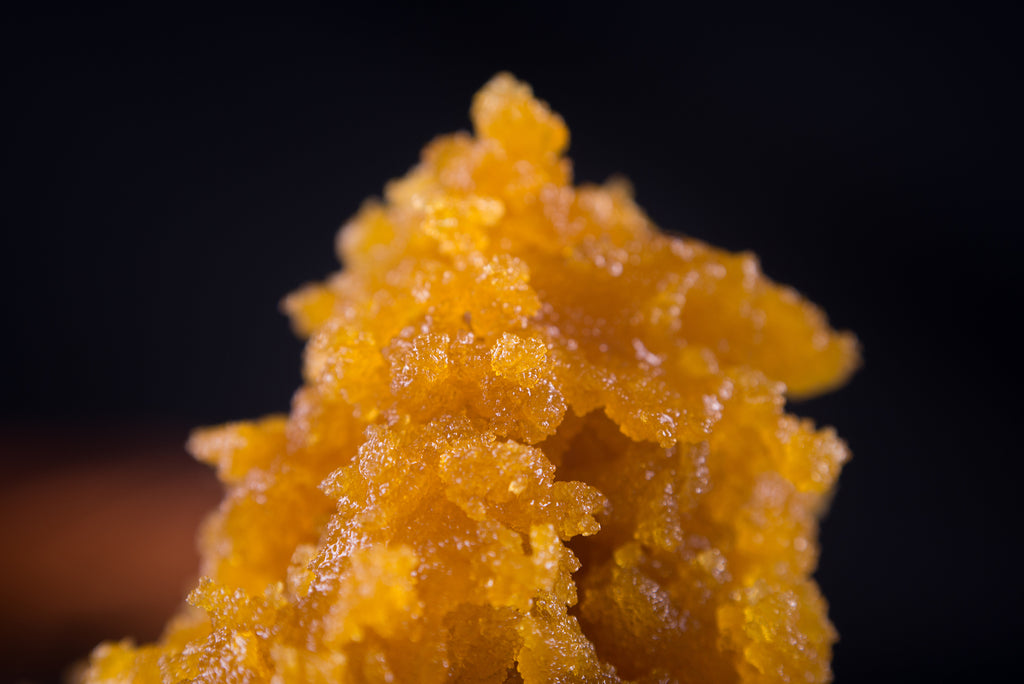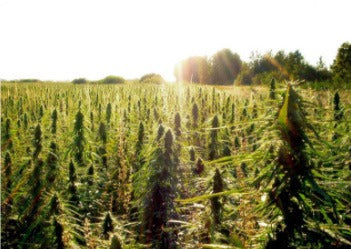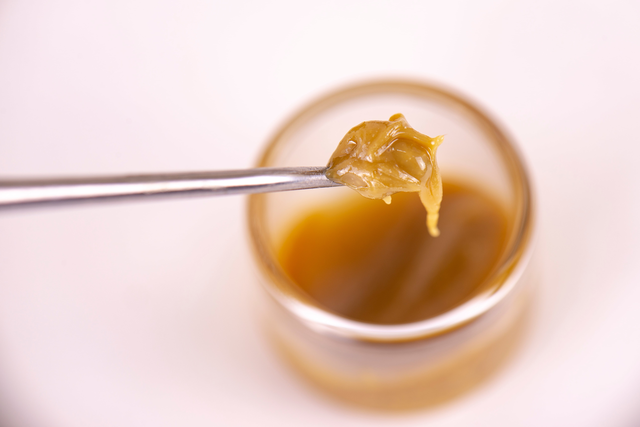The Ultimate Guide to CBD Wax

There’s no denying that the CBD market is booming. Each and every day more and more people are discovering the wide range of benefits the wildly popular non-psychoactive cannabinoid contains.
CBD has become a household name. From aging seniors to ill patients, fitness enthusiasts and basically everyone in between, CBD seems to be beneficial in one way or another for pretty much everyone (and everything). The plethora of CBD products available on the market reflect the needs of the countless individuals who find benefit from the non-psychoactive cannabinoid.
Different forms of CBD can be beneficial for different types of people. One form that is increasing in popularity is CBD wax. What exactly is it? In this guide to CBD wax we’ll take a look at just what it is, how it’s made, and how it could be beneficial for you.
What Is CBD Wax?
For those of you new to the modern world of cannabis, CBD wax is a type of cannabis concentrate. CBD wax is growing in popularity due to the heightened potency it contains. Because it’s so highly concentrated, CBD wax allows you to take high levels of CBD while ingesting less volume in the process. Put simply, you need less CBD to achieve the results you’re looking for.
How Is Wax Made?
CBD wax can be made using several different extraction processes. It’s basically made by blasting the plant material with a solvent in what’s called a “closed-loop extraction system.” The most common methods used to produce CBD wax include:
- Butane Hash Oil Extraction (BHO) — As the name suggests, BHO extraction uses butane to “pull out” all the essential oils contained in the cannabis plant, including cannabinoids, terpenes and flavonoids. The butane is then left to evaporate, with the result being a highly concentrated substance. Although BHO is a popular extraction method, it does have its downfalls. Aside from the risk of explosion during production, any residual butane left in the concentrate should be removed. This is important because butane is toxic to humans. Despite these factors, BHO extraction has been a popular extraction method for years.
- CO2 Extraction — CO2 extraction has become one of the most preferred methods of producing CBD wax. It uses pressurized carbon dioxide to pull out cannabinoids, terpenes and flavonoids. High pressure and heat are used to turn the CO2 supercritical, which means it is simultaneously like a liquid and a gas, which is why it is often referred to as “supercritical CO2 extraction.”
 Unlike butane, any CO2 that remains in the concentrate after extraction simply evaporates. This offers a “cleaner” CBD wax than those produced with butane, where consumers can be confident they aren’t ingesting any residual solvents along with their CBD.
Unlike butane, any CO2 that remains in the concentrate after extraction simply evaporates. This offers a “cleaner” CBD wax than those produced with butane, where consumers can be confident they aren’t ingesting any residual solvents along with their CBD.
While these methods of extraction were virtually unheard of less than a decade ago, they are now commonplace in the modern world of cannabis. There is a high level of knowledge and expertise that goes into producing CBD wax. Each part of the process is a blend of creativity, science and skill, offering a final product that is far more potent than anything else available on the market.
Different Types of Wax
There are actually a few different kinds of CBD wax and knowing the differences between each can help you make a more informed choice if you decide CBD wax might be beneficial for you.
Manufacturers won’t typically list their products as “CBD wax.” Instead, you’re likely to find products labeled as things like “CBD shatter,” “CBD budder,” “CBD crumble” or “CBD live resin.”
Let’s take a look at what makes each unique:
-
 CBD Shatter — The structure of CBD shatter is different than “wax,” and just as the name implies, shatter appears to look like broken glass. Some might liken it to rock candy. Shatter is produced by using chemicals or heat to extract the oil, then when it cools and begins to harden, it takes on the appearance of amber-hued glass. When shatter is heated to consume, it turns into a gooey, thick liquid that looks very similar to honey.
CBD Shatter — The structure of CBD shatter is different than “wax,” and just as the name implies, shatter appears to look like broken glass. Some might liken it to rock candy. Shatter is produced by using chemicals or heat to extract the oil, then when it cools and begins to harden, it takes on the appearance of amber-hued glass. When shatter is heated to consume, it turns into a gooey, thick liquid that looks very similar to honey. - CBD Budder — CBD budder is made by air pressure and purging hemp at extremely high temperatures. The result is a fluffy wax that is very similar to the consistency of butter, which is where this particular CBD wax gets its name.
- CBD Crumble — CBD crumble is produced using a similar extraction process to that of budder, but uses a pre-purged CBD oil that is higher in moisture and viscosity. This results in a product that’s more crumbly than CBD budder with a consistency that’s a lot like feta cheese.
- CBD Live Resin — To produce CBD live resin, hemp is first freeze-dried while it is fresh before the extraction process takes place. All other extraction methods used to make CBD wax use hemp that has been air dried and cured. When hemp is frozen first, there is increased preservation of cannabinoids and terpenes, resulting in what many consider to be the “crème de la crème” when it comes to different types of CBD wax, which is why it’s typically the costliest option.
How to Use CBD Wax
There are a few different ways to consume CBD wax. By far the most popular is dabbing. The word “dabbing” is so associated with CBD wax that you’ll sometimes hear wax referred to as a “dab.”
Let’s look at the different ways you can use CBD wax, so you can make an informed decision on what might work best for you.
Dabbing
As we mentioned, dabbing is the most popular way to consume CBD wax. While the whole process of dabbing might seem completely foreign at first, it’s really easy to dab once you know what you’re doing.
Technically, dabbing is “the flash vaporization” of CBD wax when applied to a (very) hot surface and inhaled.
To dab, you’ll need what’s known as a “dab rig.” There is a huge array of dab rigs available in all different shapes and sizes. One of the major components of the dab rig is the nail, which is the part of the rig where the wax is vaporized. The nail is usually made of ceramic, glass or titanium, and is heated up using a blowtorch.
All you do is add a bit of the CBD wax to the hot nail surface, where it immediately turns to vapor, which is then inhaled like a traditional bong. Never taken a traditional bong hit? Click here to watch a video about how to properly take a dab with a dab rig.
Bong
For those of you familiar with using a bong, CBD wax can also be taken with a bong. You just place your CBD wax in the bowl of your bong, light and inhale like you normally would when taking a bong hit.
Vaporizing Vaporizing CBD is one of the most popular methods of ingestion. One of the best parts about vaping is that your vape pen can be taken with you anywhere you go. There are plenty of vaporizers on the market made specifically for concentrates and investing your hard-earned cash in a quality model is vital if you’re looking for the best experience possible. Vaporizers on the lower end of the quality spectrum won’t heat up enough to vaporize your CBD wax. Your best bet is a vaporizer with a quartz crystal or ceramic heating chamber with titanium coils.
Vaporizing CBD is one of the most popular methods of ingestion. One of the best parts about vaping is that your vape pen can be taken with you anywhere you go. There are plenty of vaporizers on the market made specifically for concentrates and investing your hard-earned cash in a quality model is vital if you’re looking for the best experience possible. Vaporizers on the lower end of the quality spectrum won’t heat up enough to vaporize your CBD wax. Your best bet is a vaporizer with a quartz crystal or ceramic heating chamber with titanium coils.
What Are the Benefits of CBD Wax?
The biggest benefit of CBD wax is undoubtedly the high potency it contains. When CBD wax is made right, it contains little to no residual solvents and an extremely high concentration of CBD.
Take note. CBD wax is a concentrated form of CBD that doesn’t take much to get the job done. This highly concentrated form of CBD could be what it takes for you to experience a noticeable effect.
While not everyone benefits from CBD the same, there are countless people that have experienced better results by using CBD wax over traditional methods like CBD tinctures or CBD capsules.
Have questions that this guide to CBD wax didn’t answer? We’re always here to help.
Thanks for reading! To show how much we appreciate you, we’re going to give you 16% off your next order. Just use code READER16 at checkout!

Newsletter signup
Join the Joy Organics Family
Sign up and get updates on new products, as well as special coupons and discounts.
testimonials
What Our Clients Say
“This is a company that truly cares about its customers and providing the best CBD products currently available on the market.”











Join In On The Conversation
Your email address will not be published. Required fields are marked *
Comments will be approved before showing up.